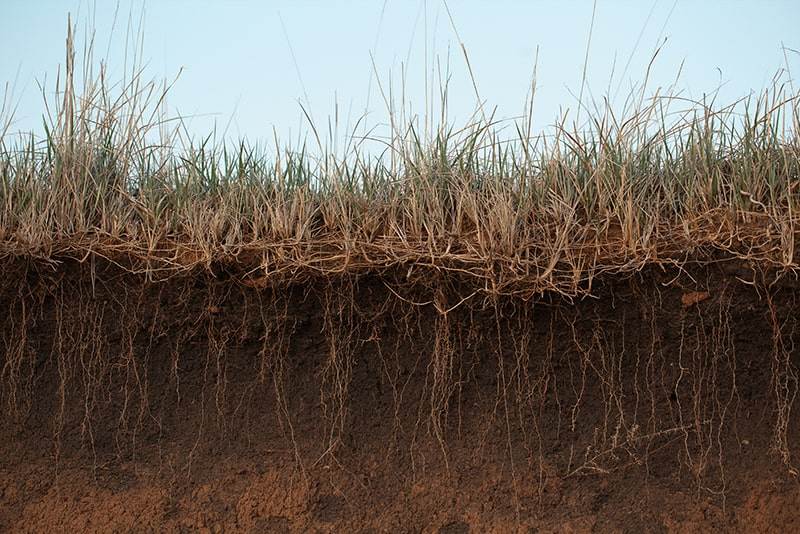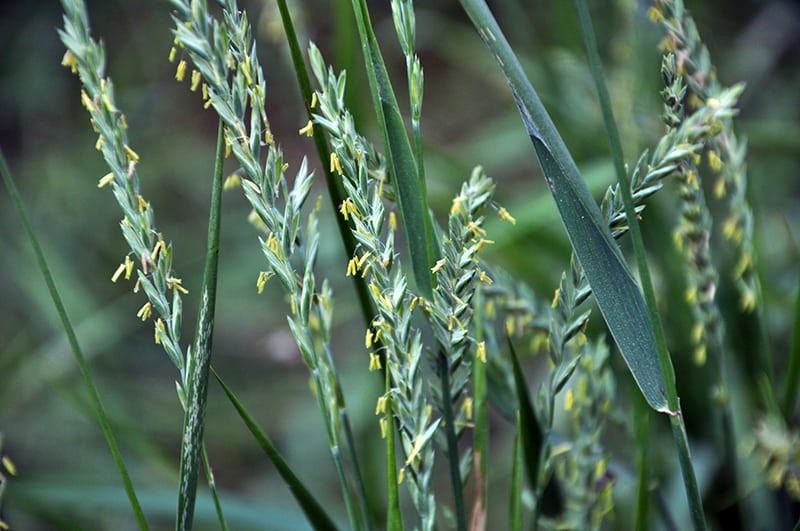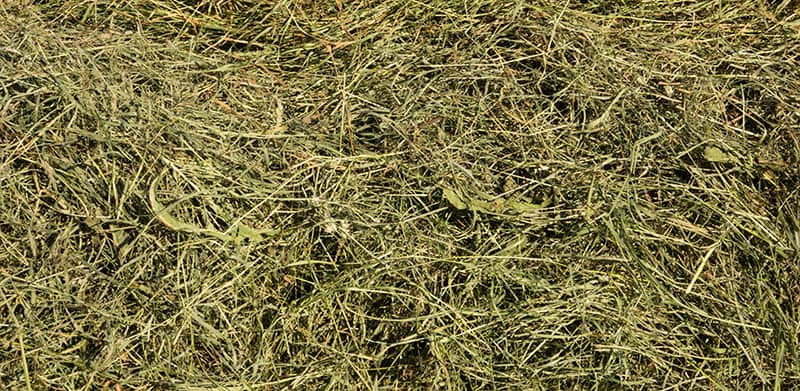Cover crops include a variety of plants that are sown with the goal of improving conditions for the following season’s cash crop. They are not intended to produce a fruitful bounty, but instead, contribute to the health of the land where they are planted and subsequently killed. Cover crops help reduce soil erosion, suppress weeds, improve soil quality, and cycle nutrients.
Cover crops are often described as “fixing” the nitrogen in soil. Today, we will explore what fixing refers to, as well as the cover crops and methods used to improve soil.
What Is Nitrogen Fixation?

Nitrogen is an essential element for plants to construct their fundamental building blocks of life, amino acids, proteins, and nucleotides. Nitrogen fixation is the process of taking atmospheric nitrogen (N₂) and converting it into a form of nitrogen—typically nitrate (NO₃⁻) or ammonia (NH₃)—that plants can put to use.
Because plants cannot fix nitrogen independently, they form intimate symbiotic relationships with nitrogen-fixing bacteria; in exchange for energy (in the form of ATP), the bacteria provide usable forms of nitrogen to the plant.
Plants in the legume family tend to form the most effective relationships with these special bacteria, known as Rhizobium and Bradyrhizobium. The rhizobia colonize the roots of the legumes, triggering the formation of nodules to house the bacteria. This initiates the symbiotic, or mutually beneficial, relationship between the rhizobia and plants.
Why Is the Carbon:Nitrogen Ratio Important?

Carbon:Nitrogen ratios are essential in determining the amount of nitrogen in a cover crop residue that will be available for use by the subsequent cash crop. C:N ratios vary with type and life stage of the plant.
If the C:N ratio is higher than 20:1 when cover crops decompose, microorganisms in the soil will tie-up, or cause to remain in its organic form, any remaining nitrogen, making it unavailable for plant use. If the C:N ratio is below 20:1, microorganisms will convert organic nitrogen into a usable plant-available inorganic form during a process called mineralization.
C:N ratios tend to be lowest when the plant has reached maturity, but remains in a vegetative, as opposed to reproductive, state. Because of their relationships with rhizobia, legumes tend to have the lowest C:N ratios of common cover crops.
Nitrogen Fixers vs. Nitrogen Scavengers

Although the majority of this article is focused on nitrogen fixers, it is important to note that there are cover crops known as nitrogen scavengers that will also aid in improving soil health and quality. Scavengers include grasses and brassicas, such as mustards and rapeseed. While nitrogen fixers uptake atmospheric nitrogen and convert it into usable forms, nitrogen scavengers uptake nitrogen that is already in the soil and sequester it in their roots. In a similar manner to the fixers, the termination and decomposition of scavengers will result in an increase in available nitrogen for the cash crop.
Warm & Cool Season Nitrogen Fixing Cover Crops
Cold Season Nitrogen-Fixing Cover Crops
Cold-season nitrogen-fixing cover crops include alfalfa, winter field peas, hairy vetch, clover, and lupine. These should be planted in late summer or early fall to allow adequate time (four to eight weeks) for growth before winter frost arrives.
Cold-season cover crops are split into two categories—winter-killed and winter-hardy. Those that fall into the first category are killed by midwinter temperatures, but are productive enough during their growth phase that they contribute an appreciable amount of nitrogen to the soil. Cover crops that fall into the latter category endure the winter and resume growth in the spring.
Warm Season Nitrogen-Fixing Cover Crops
Warm season cover crops include cowpea, sunn hemp, peanuts, mungbean, and soybean. These can be planted in the spring in inactive garden beds as a (relatively) quick, organic, and effective way to fertilize inactive soil, slow topsoil erosion, and retain moisture in the dry season.
How Do I Sow My Cover Crops?

Most cover crops can be sown simply by broadcasting the seeds. Roughly dig your target soil, remove all weeds, tamp the soil down lightly, and scatter your seeds evenly. Rake your seeds into the soil for shallow coverage, tamp down once more, and water your seeds in.
In some instances, it is necessary to inoculate the cover crop with the correct bacteria to ensure that nitrogen fixation is occurring as expected. Some companies sell pre-inoculated crop seeds, but it may be necessary to inoculate yourself. If doing it yourself, ensure that the inoculant has made contact with the majority (or all) of your seeds prior to sowing. After inoculating, sow the seeds as normal.
When Should I Terminate My Cover Crops?
The exact time of termination is dependent on the type of cover crop used, geographic location, climate, when it was sown, etc., but it is worth noting that nitrogen fixation may begin as late as six weeks after sowing a cover crop.
Generally, cover crops must be terminated at maturity, prior to seed set, and two to four weeks before the next crop is sown. This allows time for the cover crop to decompose and begin releasing nitrogen and other nutrients.
The life stage of the cover crop when it is terminated is an important factor affecting the amount of available nitrogen for the following season’s crop. A plant allowed to enter its reproductive stage will begin using its nitrogen stores and consequently have a lower nitrogen concentration than one in its vegetative stage. Additionally, cover crops that have begun to produce seeds may return as weeds in the upcoming cash crop.
Methods of Termination

Different species of cover crops require varying methods of termination in order to ensure total removal. Common organic approaches include winter-killing, mowing, tilling, a combination of mowing and tilling, and roller-crimping.
Winter-Kill
Winter-killed cover crops leave a layer of mulch on the soil surface and do not require incorporation prior to planting the cash crop. Sowing the cash crop may require access to a no-till drill, however, as the cover crop is likely to leave a dense residue mat that will require penetration for subsequent seeding.
Mowing and Tillage
Many cover crops can be effectively terminated by simply mowing close to the soil surface prior to seed set. Like winter-kill residues, mown residues can be left on the soil surface as a mulch (or incorporated, as explained below). Depending on species and thoroughness, there is a possibility of the cover crop growing back after being mown.
Alternatively, tillage involves the incorporation of the cover crop residue into the soil, typically using heavy equipment. This incorporation allows the residue to begin decomposing more quickly, releasing nutrients back into the soil for the cash crop.
Roller-Crimping
Roller-crimpers leave an intact mat of mulch on the soil surface by “crimping” the stems of the cover crop, effectively killing them. Timing is a critical aspect when terminating crops with a roller-crimper. Too early, and the crop may not be in a “killable” life stage; too late, and the seeds may come back as weeds with the cash crop.
It is important to note that some cover crop species are not susceptible to roller-crimping, including most perennial and biennial plants.
Why Shouldn’t I Use Nitrogen Fertilizers?
Commercially available nitrogen fertilizers essentially do for your cash crops what nitrogen-fixing cover crops do for them—supply them with usable, inorganic nitrogen. However, the commercial production of nitrogen fertilizer results in increased carbon dioxide emissions into the atmosphere.
Additionally, nitrogen fertilizers frequently find their ways into both freshwater and marine systems, contributing to eutrophication—the excessive richness of nutrients, leading to overgrowth of algae—and dead zones where organisms are unable to survive.
Although nitrogen fertilizers are proving to be detrimental to the environment, cover crops have demonstrated that they are a reliable alternative to effectively supplying your plants with an organic source of nitrogen.








